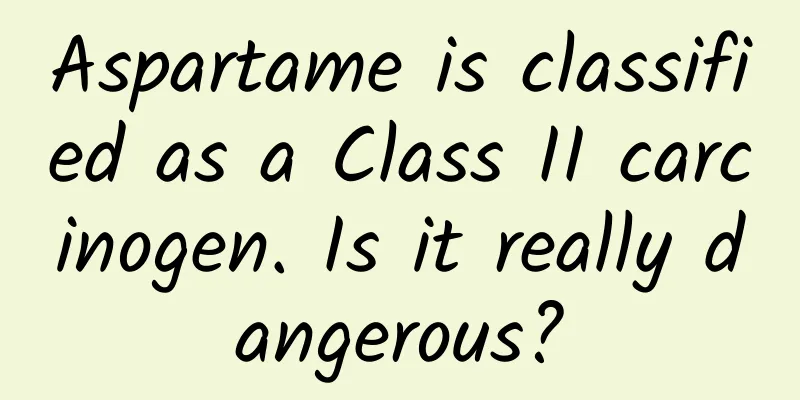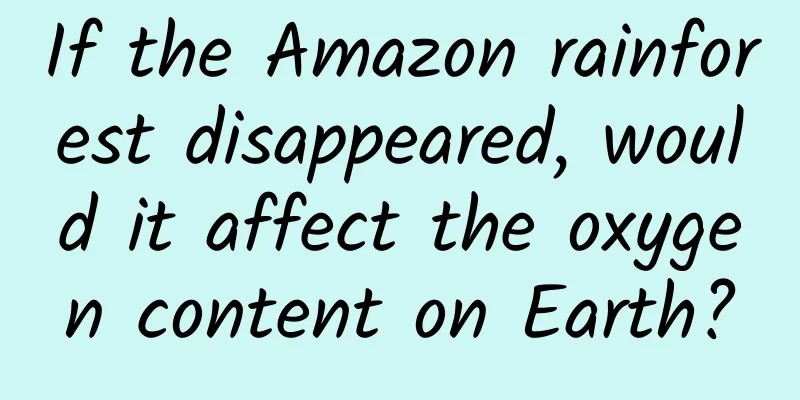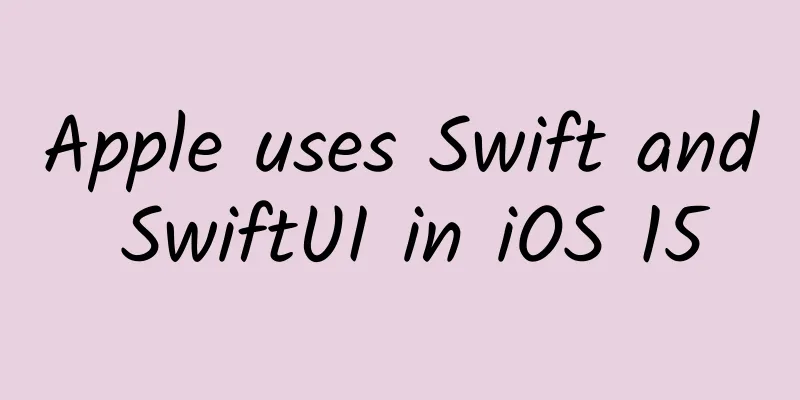Aspartame is classified as a Class II carcinogen. Is it really dangerous?

|
Introduction: Staying away from aspartame is a wise choice in any case, but for people who have been consuming sweeteners, there is no need to worry too much because aspartame is listed as a possible carcinogen. Written by Wang Chenguang (PhD in Biology, former professor of Peking Union Medical College) On July 14, the International Agency for Research on Cancer (IARC), the World Health Organization (WHO) and the Joint Expert Committee on Food Additives (JECFA) of the Food and Agriculture Organization jointly released an assessment report on the health effects of aspartame, classifying the world's most widely used sugar substitute product "aspartame" as "possibly carcinogenic to humans (IARC 2B Group)". Even before the report was released, the rumor that WHO had listed aspartame as a carcinogen had already hit the sugar substitute food processing industry like a hurricane. What caused aspartame to suddenly change from a "sweet angel" to a "carcinogenic devil"? How safe is aspartame? Scientific and prudent pre-market evaluation Before we further reveal the true face of aspartame, we need to briefly understand the organizations and institutions mentioned at the beginning, namely WHO, JECFA and IARC. WHO (World Health Organization), JECFA (Joint Expert Committee on Food Additives) and IARC (International Agency for Research on Cancer) are all specialized agencies of the United Nations, and they undertake relevant tasks and responsibilities in different fields. People who have just experienced the COVID-19 pandemic for three years are no strangers to the name WHO. As one of the United Nations agencies, WHO is committed to global public health affairs. Its goal is to lead and coordinate global health policies and ensure that everyone has access to high-quality health care. JECFA is an expert committee jointly established by the Food and Agriculture Organization of the United Nations (FAO) and the World Health Organization (WHO) to assess the risks of food additives, pesticide residues and veterinary drug residues to human health. The agency provides scientific evaluation opinions and formulates international food safety standards. IARC is a specialized branch of the WHO dedicated to studying the causes and prevention of cancer. IARC evaluates the evidence of the carcinogenic risks of different substances and factors to humans and publishes reports on the classification and evaluation of carcinogens. The three agencies have different focuses but the same goals. Regarding the issues related to aspartame, IARC experts evaluate the evidence collected and classify its carcinogenicity level; JECFA also evaluates the evidence and establishes its safety standards or makes adjustments to existing standards. Then let's get to know aspartame. Aspartame is an artificial sweetener that is 150-200 times sweeter than sugar. In the last century, the scientific community gradually realized the harm of sugar to health, and finding sugar substitutes (sugar substitutes) became the goal of the scientific community and the food industry. Aspartame was discovered in 1965 and was eventually launched in the United States as a food additive in 1981, successfully entering the food processing market. Different sugar substitutes have different effects. Aspartame is widely used in beverages and is sometimes used as a flavoring agent for oral medicines in the pharmaceutical industry. However, due to its heat instability, aspartame is rarely used in baked foods that require high-temperature processing. Aspartame has been on the market for more than 40 years, so why is its safety being mentioned again now? Is it because aspartame did not undergo rigorous toxicology studies before it was put on the market? Or is it because the regulatory authorities did not perform their review and supervision responsibilities well? In fact, none of these speculations are true. Judging from historical records, the evaluation process before aspartame was put on the market was scientific and cautious. Aspartame was first evaluated for safety by JECFA in 1975. However, the first evaluation meeting did not reach a conclusion due to the lack of safety data on diketopiperazine, the metabolite of aspartame in the body. The following year, JECFA reviewed the issue again and determined that the information was still incomplete, requiring the applicant to provide further safety data on diketopiperazine. In 1977, newly submitted data from animal and human trials showed that diketopiperazine did not pose a health risk. At this point, the safety of aspartame has been fully proven, but this is only the first step in completing the entry of aspartame into the market as a food additive. JECFA's responsibility is not only to evaluate its safety, but also to determine the acceptable daily intake of an additive based on safety data. The committee requires the applicant to provide verified data to ensure the validity of the toxicology data. Two years later, JECFA finally received evidence to verify the toxicology data and accepted it. In 1980, JECFA systematically evaluated a number of animal-based in vivo safety studies and several human studies, and finally determined that the acceptable daily intake (ADI) of aspartame was 0-40 mg per kilogram of body weight, and the ADI of its metabolite diketopiperazine was 0-7.5 mg/kg body weight. Since then, food regulatory authorities in various countries have been able to refer to the above regulations to give their own safe usage limits. In the United States, artificial sweeteners such as aspartame are regulated by the Food and Drug Administration (FDA), which sets the ADI of aspartame at 50 mg per kilogram of body weight. The EU agency responsible for regulating food additives sets the ADI of aspartame at 40 mg per kilogram of body weight. How to understand this number? We can put it in a more down-to-earth way: if a person does not drink water all day and only drinks sugar-free drinks containing aspartame, the daily aspartame intake is about 8-9 mg per kilogram of body weight, which is less than 1/5 of the recommended upper limit; or a person weighing about 60 kilograms would have to drink more than 30 cans of aspartame-containing drinks every day to reach the prescribed upper limit of intake. There is no definitive evidence that aspartame causes cancer The claim that aspartame causes cancer is not new in recent years. This concern has been around since it was launched on the market. Early evidence of cancer risk came from a study conducted by Italian scientists on rats, which showed that aspartame may increase the risk of certain blood-related cancers (leukemia and lymphoma). However, this result has not been widely recognized by the scientific community and is inconsistent with the results of population-based cancer epidemiological studies. Based on a comprehensive review of all the evidence, regulatory authorities in different countries and regions have drawn their own conclusions. The U.S. FDA believes that the use of aspartame as a sweetener is safe and does not pose a health risk; the European Food Safety Authority also does not accept evidence that aspartame increases the risk of leukemia, brain tumors, or multiple cancers. Although research on the carcinogenicity of aspartame is still ongoing, these agencies agree that the research conducted so far has not found definitive evidence to prove its carcinogenicity. As a sugar substitute, aspartame is not the first to be questioned for its carcinogenicity. Other sugar substitutes before aspartame were questioned and even banned long ago. Let's review the history of saccharin and sodium cyclamate, which were used as sugar substitutes in food additives earlier. Saccharin is the oldest of all sugar substitutes, having been introduced into the food processing industry in the late 19th century. In the 1970s, studies found that saccharin may be a carcinogen. In this study, mice were fed an amount equivalent to hundreds of cans of saccharin-containing beverages that humans drink every day, and it was found that the incidence of bladder cancer in mice increased significantly. Based on this evidence, Canada quickly banned the use of saccharin as a dietary additive, and the FDA subsequently banned the addition of saccharin to food. However, the ban sparked dissatisfaction among the public, especially those with diabetes. Soon, the FDA compromised and lifted the ban, instead requiring food processors to add a label that "saccharin may cause cancer." Subsequent studies have confirmed that there is no association between saccharin and cancer (including bladder cancer), and that normal intake has no obvious adverse effects on human health. Moreover, the health risks found in animal experiments, such as acute bleeding, liver and kidney damage, and bladder cancer caused by large amounts of saccharin intake, have not been found in human trials. In the end, based on the evidence, saccharin was removed from the list of suspected carcinogens, the FDA officially withdrew the saccharin ban, and in 2000 abolished the law requiring saccharin products to be labeled with health warnings. Cyclamate began to be added to beverages in the 1950s. Its fate after it was put on the market was similar to that of saccharin. Some studies have also found that it can cause bladder cancer. Based on these studies, the United States banned the use of cyclamate as a food additive, and Canada, the United Kingdom and Japan followed suit and banned it to this day. Although the subsequent review of these experimental data and the evaluation of other data led scientists to conclude that cyclamate is not carcinogenic, it still has not been approved for re-listing in the United States. China is one of the more than 130 countries and regions in the world where cyclamate can be used. In 2019, the fate of saccharin and cyclamate finally fell on aspartame. This year, an advisory group of 29 scientists from 18 countries listed aspartame as a high priority for the 2020-2024 IARC special review. What evidence prompted this shift? Aspartame will be hydrolyzed and absorbed after entering the gastrointestinal tract. The hydrolysis process produces methanol, aspartic acid and phenylalanine. The liver is the organ that metabolizes methanol. After methanol is absorbed into the blood, it is first oxidized to formaldehyde in the liver, and then further oxidized to form formic acid. Methanol, formaldehyde and formic acid are all toxic to the liver. A number of recent studies have re-evaluated the carcinogenicity of aspartame. A study on mice found that maternal intake of aspartame during pregnancy increased the risk of cancer in pups. A recent population-based epidemiological survey in France stated that consuming aspartame increases the risk of cancer, and this includes almost all cancers: esophageal cancer, gastric cancer, liver cancer, colorectal cancer, oral cancer, pharyngeal cancer, ovarian cancer, endometrial cancer, prostate cancer, lymphoma, myeloma, etc. It is these studies that prompted the WHO to re-examine the impact of aspartame on health. However, this is only part of the evidence for the assessment of aspartame's health impact, which can be said to be very little evidence. More evidence shows that aspartame does not have these carcinogenic risks. Moreover, the above evidence is difficult to directly prove that aspartame causes cancer. First, many foods are also broken down into methanol in the gastrointestinal tract, and it is inevitable that trace amounts of methanol enter the human body. This speculation makes it difficult to establish the adverse effects of aspartame on health. Secondly, the carcinogenic risk for all tumor types cannot establish a direct relationship between aspartame and cancer. Just as sugars do not directly cause cancer, excessive intake of sweets causes obesity, which is thus associated with cancer - this is more of a combined impact of lifestyle habits rather than a single ingredient in the diet. There is plenty of evidence to the contrary. For example, a large epidemiological survey conducted by the National Cancer Institute (NCI) in 2006 investigated the eating habits of 500,000 American retirees and followed up on them for more than five years. The survey then focused on comparing the cancer incidence of people who frequently drank four types of beverages containing aspartame with other groups. The study found that consuming more beverages containing aspartame was not associated with the occurrence of lymphoma, leukemia or brain tumors. Of course, this study also has its shortcomings. Cancer development is a long process, and 5 years may not be enough to see the difference. But in 2013, a meta-analysis of epidemiological research evidence conducted over the past 10 years also reached a conclusion consistent with the NCI study. How scary are Class 2 carcinogens? Now, let's look at how IARC classifies carcinogens. Class 1 carcinogens are substances that are clearly carcinogenic to humans. They include air pollution, ultraviolet rays, aflatoxin, asbestos, hexavalent chromium, dioxins, formaldehyde, alcoholic beverages, tobacco, betel nuts, etc. Category 2 is suspected carcinogens, which are further divided into 2A and 2B. Category 2A carcinogens refer to substances with a high possibility of causing cancer, with evidence limited to in vivo animal studies and no human data support, and are only theoretically carcinogenic to humans, such as red meat and processed meat. Category 2B carcinogens, which is the camp that aspartame is classified into this time, refer to substances with very limited evidence of causing cancer, even in animals, the evidence is not sufficient or the data is inconsistent. This category includes coffee, kimchi, mobile phone radiation, diesel and gasoline. Categories 3 and 4 belong to substances that lack evidence to support their carcinogenicity or are clearly not carcinogenic, and are not discussed here. Regarding the carcinogenicity of aspartame, there are great differences even in the data on animals. Based on this, I think it is very reasonable for the report to classify aspartame as Class 2B, the same category as coffee, kimchi, etc. How do we choose something that is listed as "possibly carcinogenic"? In short, balance the risks and benefits. We will not stop eating red meat because it is listed as a Class 2A carcinogen, nor will we stop drinking coffee because it is listed as a Class 2B carcinogen, nor will we stop using mobile phones because radiation is listed as a Class 2B carcinogen. In mid-May, the WHO issued guidelines pointing out the problem of sugar substitutes, with a focus on recommending against controlling weight through sugar substitute diets; sugar substitutes also have other potential health risks. But sugar substitutes are not completely useless. The love of sweetness is written into the genes of humans in the long history of evolution. In today's relatively abundant material world, the calories consumed through food exceed the consumption, thus inducing a variety of chronic diseases such as diabetes, hypertension and cardiovascular disease. But humans' (psychological) pursuit of sweetness does not stop just because the physiological need for calories is met. If you really can't resist the temptation of sweetness, consuming sugar-free drinks and foods in moderation is a second-best choice, especially for diabetic patients. This does not contradict the guidelines issued by the WHO. On the other hand, even if aspartame is not listed as a Class 2 carcinogen, we cannot drink sugar-sweetened beverages without restraint. Because sugar-sweetened beverages, like sugary beverages, increase hunger, causing people to overeat and gain weight. In addition, there are studies showing that aspartame has other health risks, as mentioned above. Regardless of whether aspartame is listed as a "possible carcinogen to humans", for the sake of health, it is best to give up sweeteners; and for those who have been consuming sweeteners, there is no need to worry too much because aspartame is listed as a Class 2 carcinogen. References: [1] https://cdn.who.int/media/docs/default-source/nutrition-and-food-safety/july-13-final-summary-of-findings-aspartame.pdf?sfvrsn=a531e2c1_5&download=true [2] https://ehjournal.biomedcentral.com/articles/10.1186/s12940-021-00725-y [3] IARC Monographs Priorities Group. Advisory Group recommendations on priorities for the IARC Monographs. Lancet Oncology 2019; 20(6):763–764. [4] https://www.cancer.gov/about-cancer/causes-prevention/risk/diet/artificial-sweeteners-fact-sheet [5] https://monographs.iarc.who.int/wp-content/uploads/2023/06/Meeting134-QA-June2023.pdf This article is supported by the Science Popularization China Starry Sky Project Produced by: China Association for Science and Technology Department of Science Popularization Producer: China Science and Technology Press Co., Ltd., Beijing Zhongke Xinghe Culture Media Co., Ltd. |
<<: How to identify silk from unearthed cultural relics? The answer is... "nucleic acid test"? !
Recommend
“Rebuilding a China Mobile” may be just one step away
In "One Step Away", Jiang Wen plays Ma ...
Mobile phone shooting and editing course: Use your mobile phone to shoot short videos with a movie feel
Mobile phone shooting and editing course: Use you...
National Traffic Safety Day丨Comply with laws and regulations and travel safely
The tenth 122 "National Traffic Safety Day&q...
To operate a startup app, here are 7 things you need to do before launching it!
Whether it is as big as a product or as small as ...
Dumplings always "explode" in the pan? Maybe you need to brush up on your heat transfer skills.
No matter where you are, Dumplings are always on ...
A famous actress died of "influenza complicated with pneumonia"! Don't delay catching a cold if you have these symptoms...
According to The Paper, Taiwanese actress, singer...
App Promotion Revelation: 5 pitfalls that ASO needs to avoid after iOS 10.3 is officially released!
On March 28, Apple released the official version ...
Can you tell your real age from your breasts? How old are you?
*Aging is a complex process that affects differen...
Yushu SEO Training: Is the website over-optimized?
Does excessive website optimization affect rankin...
Master these 3 Toutiao account operation skills and easily pass the original creation!
Of course, this is not the most terrible thing. T...
"Milk is cold in nature, and drinking it will damage the spleen and stomach for people with cold body"?
Rumor: "Milk is cold in nature. Drinking it ...
When will the willow catkins begin and end in 2022? Are the catkins floating in the air in spring willows or poplars?
Every April, various willow and poplar catkins wil...
10 strategic indicators on how to quickly increase the volume of advertising!
This article will introduce in detail the specifi...
Do you have a small hole in front of your ear? This is a memorial left by your fish ancestors
I wonder if you have noticed that there is a pair...









